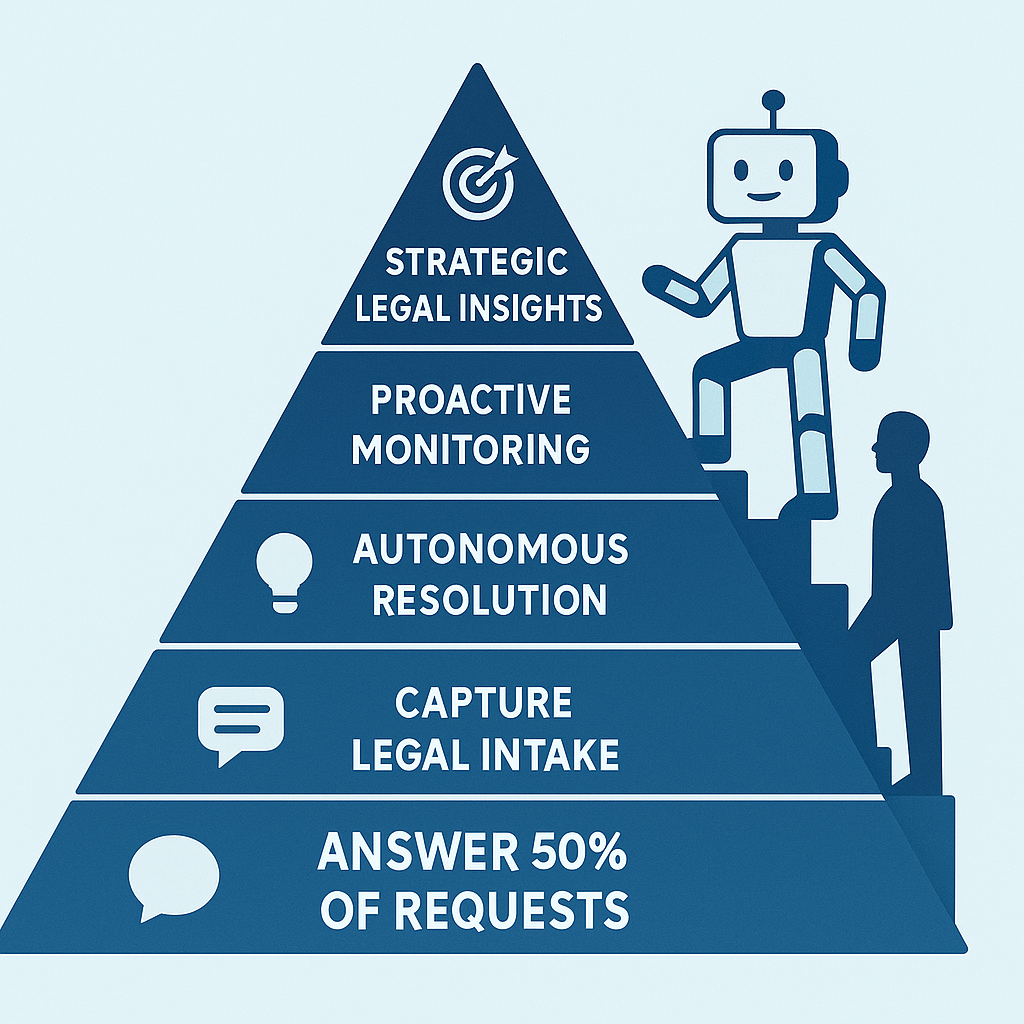
AI is no longer a futuristic promise — it’s here, it’s powerful, and it’s evolving faster than ever. Every month, we see breakthroughs that make yesterday’s capabilities feel outdated. At Riskaway, we believe the path to building an agentic AI General Counsel — one that acts, not just answers — starts with a clear and structured roadmap. Here’s what it looks like:
Step 1: Take Over the Intake
The AI’s first job is to become the frontline. It captures requests coming from all directions — via chatbot, Microsoft Teams or Slack, shared legal inboxes, or emails sent directly to the legal team. Each request is understood, triaged, and routed to the right legal or compliance expert. And crucially, the AI learns from how each request is resolved.
Step 2: Solve 50% of the Requests
Once the AI has learned enough, it begins answering directly. Around half of incoming requests — often repetitive or low-risk — can be resolved autonomously. For more complex issues, it drafts solutions and assigns them to the appropriate expert for finalisation. With every interaction, it sharpens its understanding and improves.
Step 3: Go Beyond 50% Autonomy
As the AI matures, its share of end-to-end resolution grows. It becomes a dependable assistant for employees and a force multiplier for the legal team, freeing human experts to focus on high-risk or strategic matters.
Step 4: Proactive Compliance Monitoring
Once reactive support is mastered, the AI goes proactive. It scans internal communications, documents, and systems to identify legal risks or compliance breaches before they occur — acting as a sentinel for the organisation.
Step 5: Strategic Legal Intelligence
At the final stage, the AI becomes more than just operational. It starts integrating into forward-looking initiatives — identifying legal implications of planned business moves, suggesting policy improvements, and helping shape strategic decisions.
Risky, our AI General Counsel, has already completed Stage 1 and is halfway through Stage 2. It’s handling intake across channels, learning from outcomes, and starting to respond to legal needs directly.
We’re not waiting for AGI. We’re building legal intelligence, one task at a time. And the future of in-house legal starts right here.





